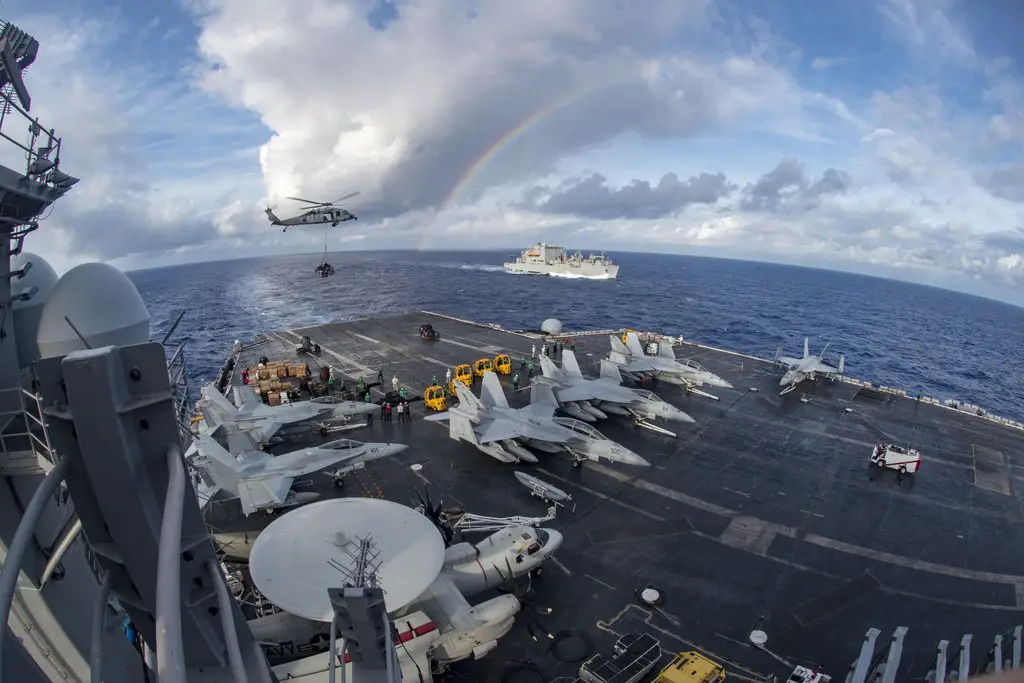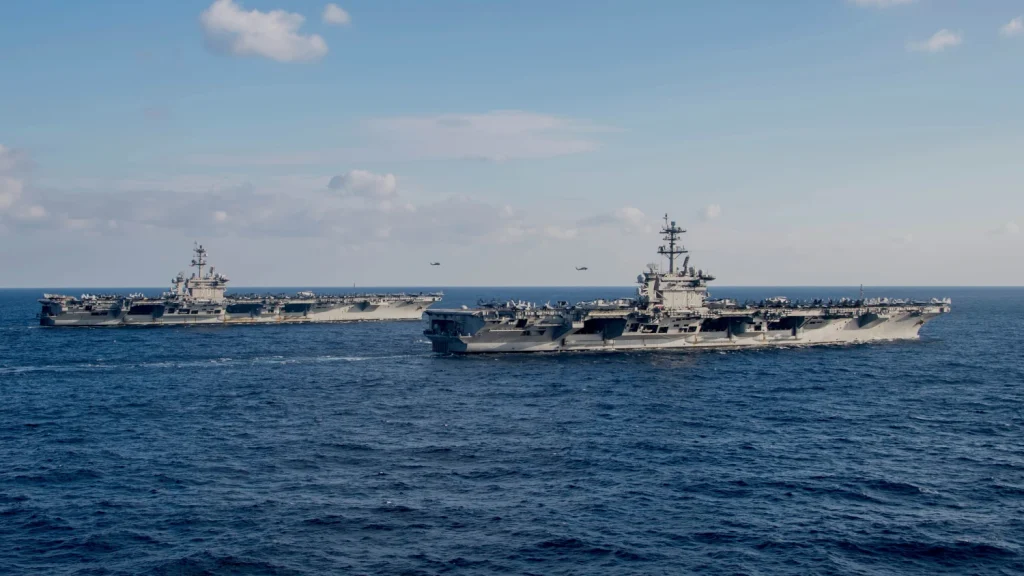The US Pacific Naval Command press service reported that an F-35 Lightning II of Carrier Air Wing (CVW) 2 crashlanded on the deck of USS Carl Vinson, and the pilot ejected at the moment when the fighter failed to stabilize during landing. After some time, the pilot was taken to the deck of an aircraft carrier by helicopter.
The release said that during the unsuccessful landing of the F-35C on the deck of the USS Carl Vinson, at least seven crew members were injured. Three of them were diagnosed with serious injuries. The seriously injured were taken to a hospital in Manila, the capital of the Philippines, as the treatment on board the ship was not possible.
According to some reports, the plane touched the deck during landing but, in the end, could not stop.
On the 24th, the U.S. Navy announced that “two aircraft carrier battle groups have entered the South China Sea for drills.” According to a statement from the U.S. Navy, U.S. Carrierstrike Groups Carl Vinson and Abraham Lincoln will participate in operations to strengthen maritime operations of the integrated sea and combat readiness.

May 2022 marks the 40th anniversary of the USS Carl Vinson aircraft carrier in the United States Navy.
The fall of the U.S. Navy F-35C fighter into the South China Sea occurred a few weeks after the British Navy’s F-35B fighter fell into the Mediterranean Sea. The aircraft was assigned to the air wing of the aircraft carrier HMS Queen Elizabeth. Then the British stated that the fifth-generation fighter “can be lifted from the bottom of the sea by the Russian military.” A few days later, the British Navy conducted an operation to raise their F-35B.
The cost of each F-35 stealth aircraft is about $ 70 – 100 million dollars. The American fifth-generation F-35 fighter jets were developed in three versions: the F-35A for the Air Force (with standard takeoff and landing), the F-35B for the Marine Corps (with short takeoff and vertical landing) and the F-35C for the Navy (takeoff with aircraft carrier catapults and landing using an arrester). The program to develop the new aircraft cost about $1.5 trillion, adjusted for inflation.
Drill with Japan
Before entering the South China Sea, the two U.S. aircraft carrier battle groups held joint exercises with the Japan Maritime Self-Defense Force ships in the Philippine Sea east of Taiwan.
Ten ships from the American side took part in the exercises, including the nuclear aircraft carriers Carl Vinson and Abraham Lincoln. Hyuga-class helicopter carrier participated from the Japanese side.
According to Japan’s NHK TV channel, the exercise was meant to highlight the cohesiveness of Japan and the United States in the region amid rising Chinese maritime activity.
The U.S. and Japan continue their efforts to forge a new military bloc in the Asia-Pacific region, a kind of NATO in the east. Speaking during a debate in parliament, Japanese Prime Minister Fumio Kishida noted the need to strengthen the military alliance with Washington further. According to him, agreements have also been reached on intensifying the so-called Quadripartite Security Dialogue (QUAD) with the participation of the United States, Japan, Australia and India, the meeting of whose leaders is planned to be held this spring in person on Japanese territory.
Concentration of U.S. aircraft carriers in the waters off the Korean Peninsula
According to the U.S. Naval Organization in South KOREA, three U.S. aircraft carriers and two landing craft have been spotted near the Korean Peninsula in Northeast Asia.
According to a South Korean source, this may be a U.S. reaction to the recent series of North Korean missile launches.
According to a January 18 report from the U.S. Naval Institute, three of the four U.S. nuclear-powered aircraft carriers on missions abroad are in the Western Pacific. Carrier Strike Group Ronald Reagan (CSG), named after the aircraft carrier USS Ronald Reagan, is stationed in Yokosuka, Japan, while CSG Abraham Lincoln and CSG Carl Vinson are in the Philippine Sea.

CSG Abraham Lincoln and Carl Vinson are escorted by the American Expeditionary Strike Group (ESG) and the Essex Landing Readiness Group (ARG) in the Philippine Sea.
The number of U.S. ships in the region is nearly double what it was at the peak of U.S.-North Korea tensions under President Donald Trump. In the period, three aircraft carriers— USS Ronald Reagan, USS Theodore Roosevelt, and USS Nimitz—and their strike groups consisting of several ships conducted a four-day exercise in November 2017 in the waters between South Korea and Japan.
The public disclosure of ship movements and their unusual concentration in countries located in relatively close proximity to the Korean Peninsula is regarded by experts as a sign that the United States is signalling its readiness to respond to events on the Korean Peninsula.
In recent weeks, the Biden administration has signalled its willingness to put further pressure on Pyongyang for conducting ballistic missile tests in violation of numerous U.N. Security Council resolutions.
The United States convened a closed-door meeting of the Security Council last week to call for additional sanctions against five North Korean citizens for aiding North Korea’s missile program. However, this proposal was put on hold by Russia and China, the other two permanent members of the Security Council.
China said it needed more time to consider the proposal, while Russia said the U.S. needed to provide more evidence to support its proposal.
